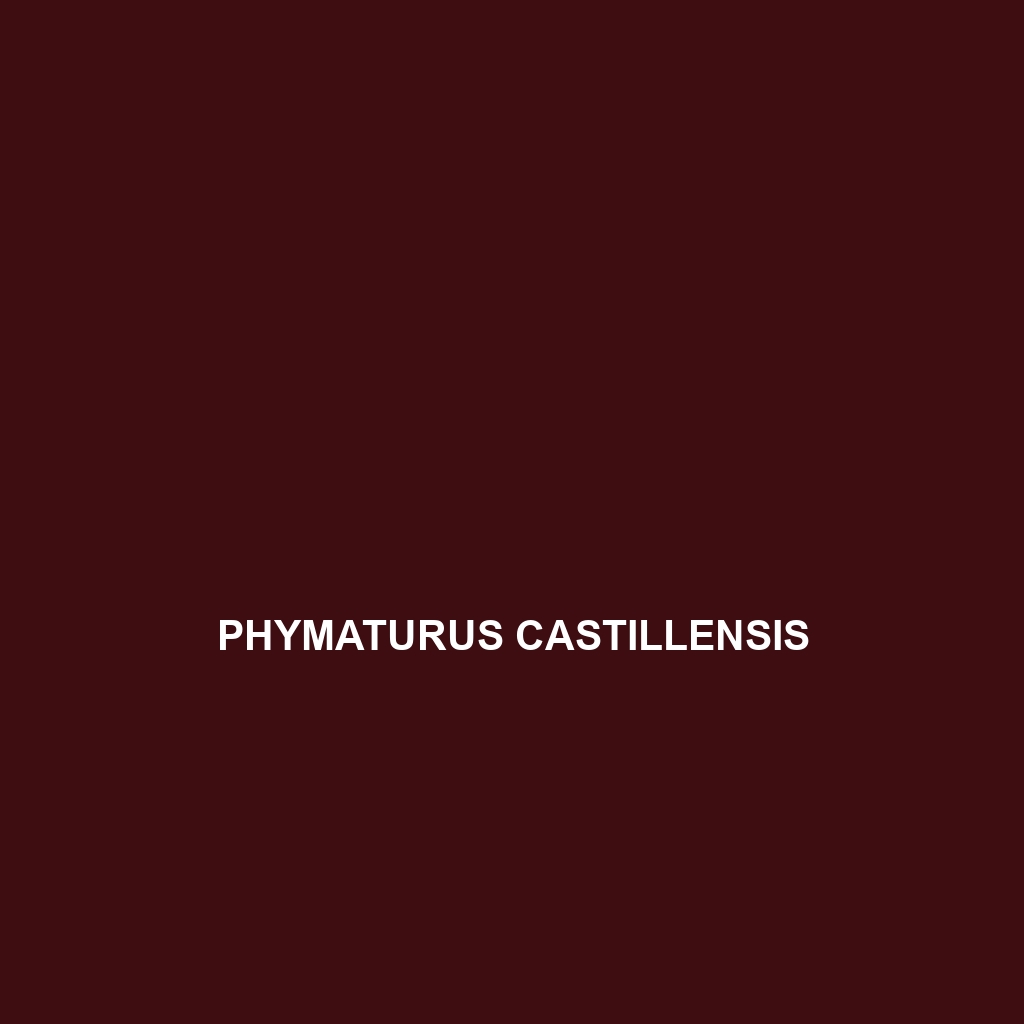Common Name
Phymaturus castillensis
Scientific Name
Phymaturus castillensis
Habitat
Phymaturus castillensis is primarily found in the temperate regions of the Andes in Argentina, specifically around the province of Mendoza. This region is characterized by its rugged mountainous terrain and a varied climate that includes both dry and wet seasons. The species thrives in dry, rocky environments and is commonly found in shrublands and grasslands that offer adequate shelter from predators. Its habitat is marked by significant altitude variations, which range from 1,500 to 2,500 meters above sea level, making it well-adapted to a range of environmental conditions typical of temperate forests. The Andes mountains create microhabitats varied in moisture and temperature, which positively influences the biodiversity present, providing a rich ecosystem for Phymaturus castillensis.
Physical Characteristics
Phymaturus castillensis exhibits distinct physical attributes that make it easily identifiable. Adult individuals typically reach a length of 20 to 25 centimeters, with males generally being larger than females. This species is noted for its robust and elongated body shape, coupled with a short, thick tail. The coloration of Phymaturus castillensis is particularly striking, featuring shades of brown and grey, adorned with unique light and dark patterns that provide excellent camouflage against the rocky terrain in its habitat. The lizard’s skin is covered with small, smooth scales, which help reduce water loss in the dry environment. Its head is relatively large, with prominent eyes and well-developed limbs that provide agility when navigating through rocky outcrops.
Behavior
In terms of behavior, Phymaturus castillensis is primarily diurnal, meaning it is active during the day. The species is known for its territoriality, with males often engaging in displays of dominance that include head-bobbing and push-ups to attract females and deter other males. Social interactions are typically centered around mating displays, where males perform elaborate courtship rituals. During the breeding season, which occurs in early spring, males become more visible as they seek mates. This lizard is not migratory; however, it does exhibit a seasonal pattern of activity, basking in the sun during cooler mornings and evenings while taking refuge during the heat of the day. Additionally, Phymaturus castillensis is known to demonstrate unique burrowing habits, creating small nests in the ground for shelter purposes.
Diet
Phymaturus castillensis is primarily an insectivore, with its diet consisting mainly of various insects, including ants, beetles, and grasshoppers. This species has a highly adapted feeding mechanism that allows it to capture and consume its prey quickly. While insects form the cornerstone of their diet, there is evidence to suggest that they may also occasionally consume plant material, positioning them as opportunistic feeders. This flexibility in feeding habits is vital for their survival, especially in an unpredictable environment where food resources can become scarce.
Reproduction
Reproductive activities in Phymaturus castillensis typically peak during the spring months following the winter dormancy period. Males engage in extensive courtship displays to attract females, which involves visual and tactile signals. After successful mating, females undergo a gestation period of approximately 40 to 60 days before giving birth to live young, which is a unique reproductive strategy among lizards. Offspring usually number between 5 to 15, and parental care is minimal, with hatchlings being independent shortly after birth. The reproductive success of this species can be influenced by environmental factors, particularly temperature and habitat quality, underscoring the importance of healthy ecosystems for their continued survival.
Conservation Status
The conservation status of Phymaturus castillensis is currently assessed as vulnerable due to habitat loss and environmental changes affecting their mountainous home. Deforestation, agricultural expansion, and climate change pose significant threats to their survival. Conservation efforts are underway to protect their natural habitats, including the establishment of wildlife reserves and continued research on their population dynamics. Local conservation organizations are also dedicated to raising awareness about the critical importance of preserving the rocky ecosystems that Phymaturus castillensis relies on.
Interesting Facts
One of the most interesting aspects of Phymaturus castillensis is its exceptional adaptation to its high-altitude environment. These lizards have developed a unique physiological mechanism to cope with low oxygen levels, which helps them thrive in mountainous terrains. Additionally, Phymaturus castillensis is known for its vibrant mating displays, which include intricate dance-like movements that not only help attract females but also establish dominance among males.
Role in Ecosystem
Phymaturus castillensis plays a vital role in its ecosystem as both a predator and prey. By controlling insect populations, it contributes to the ecological balance of its environment. Moreover, as part of the food web, they serve as prey for larger predators, thus maintaining biological diversity within their habitat. Their burrowing activity helps to aerate the soil, promoting healthy plant growth and contributing to soil health. As such, Phymaturus castillensis can be considered a keystone species, essential for the vitality of the ecosystems in which they live.
